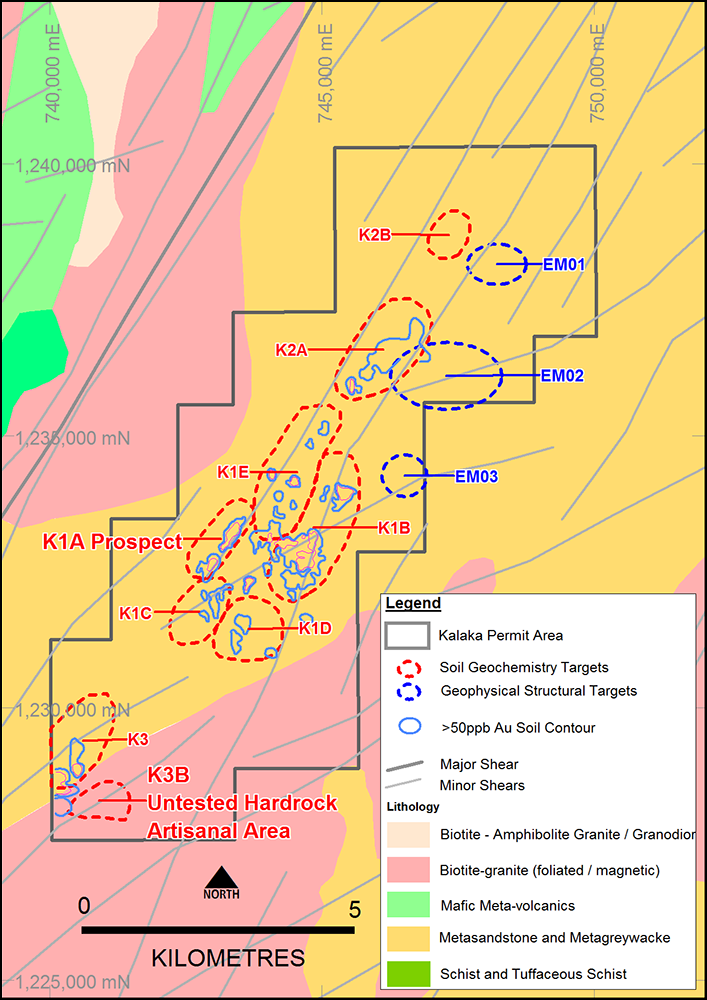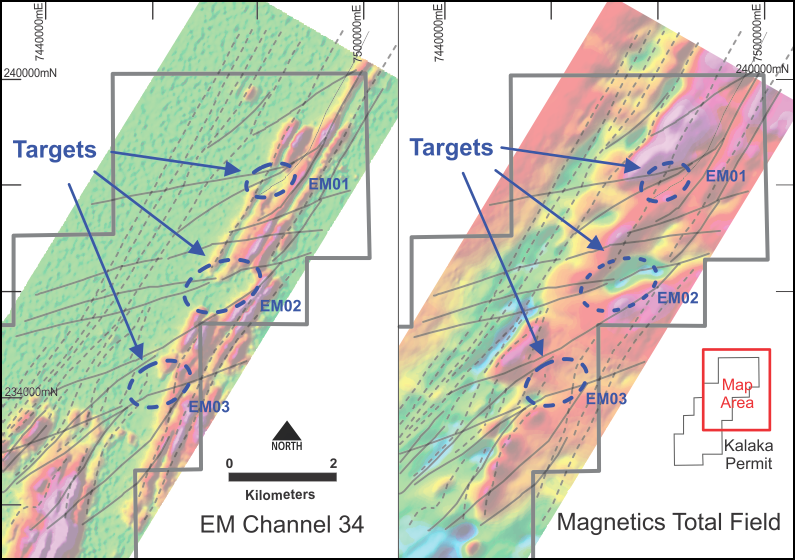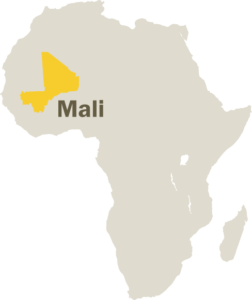Detailed geophysics and drilling in target areas is planned
Panthera holds an interest in the Kalaka Project in Mali though a JV established between IGL and Golden Spear Mining. The Kalaka Permit consists of a 62.5km² exploration tenement located about 260km SE of the capital, Bamako. Kalaka is located on the highly prospective Baoulé-Mossi Domain of the Man-Leo shield in the West African Craton. The craton is one of the world’s great gold provinces and the largest Paleoproterozoic gold-producing region. Gold mineralisation is strongly associated with shearing and alteration and can be considered an early stage exploration project.
Kalaka Project History
Originally covering 250km², the Kalaka area was progressively cut down as exploration permits were renewed to 25% of its original area, equating to 61.5km². On 11/12/2006, the Kalaka Permis de Recherche was transferred from AngloGold Limited (AGL) to Golden Spear Mining who have held the tenement since. AGL and Golden Spear Mining have completed soil sampling, geophysical surveys, and various types of drilling as tabulated below.
Geology map of Kalaka

| Activity | Quantity | Comments |
|---|---|---|
| Soil Geochemistry – AGL | 9,149 Samples | Original Permit Area |
| Airborne Magnetic & Radiometric Survey (Sysmin) – AGL | Southern Mali | 400m Line Spacing |
| Airborne Magnetic & Radiometric Survey (Bougouni) – AGL | South Mali, covering 4 Golden Spear Mining Permits | 250m Line Spacing |
| Kalaka Airborne VTEM & Magnetic Survey (05/2008) – AGL | Covers Kalaka Permit | 75m Line Spacing |
| RAB – AGL | 350 Boreholes for 12,014 meters | Original Permit Area |
| RC – Golden Spear Mining | 31 Boreholes for 3,796 meters | K1 & K2 Grids |
| Diamond Drilling – Golden Spear Mining | 18 Boreholes for 3,753.28 meters | K1 & K2 Grids |
Just over 9,000 soil samples were collected over the Kalaka project on various grids ranging from 200m by 50m to 100m by 20m. Results range up to 7430 ppb Au and enable the definition of eight targets.
Kalaka Geology
The Kalaka project is an early stage exploration project with strong indicators for economic scale gold mineralisation.

Kalaka Planned Exploration
Panthera is currently developing a phased and systematic exploration program to test the exploration targets identified and described above. The K1A and the untested K3B (southern artisanal working) areas are high priority targets where drilling is planned for 2018.
Keys to its prospectivity are:
1. High potential that there is a shallow, primary gold source for the eluvial deposits
By definition, eluvial deposits rarely occur far from the primary source of gold. Three eluvial zones have been identified in the area to the north of the Kalaka village. Of further interest is the untested artisanal gold mining area in the south of the tenement (Figure 1).
2. Approximately 80% of the tenement basement consists of Birimian Greenstones
All known orogenic gold deposits in southern Mali are hosted in Birimian Greenstones. Although outcrop is very sparse, the predominant lithologies are granite and meta-sediment with minor intercalations of volcanic and volcano-sedimentary units.
3. The structural setting is conducive to structurally controlled gold deposits.
The Project is situated adjacent and to the east of the regional Banifin Shear Zone. Strike direction of the foliation is approximately north 40° with a dip of 60° to the northwest. Interpretation of magnetic and electro-magnetic survey data postulates that hydrothermal fluids passing along splay structures have reacted with sulphidic and graphitic schists causing sulphide or magnetic destruction (i.e. alteration). A similar reaction occurs between hydrothermal fluids and banded iron formations and graphitic shales in the Yilgarn gold fields of Western Australia.
Hydrothermal fluids are typically considered to be a medium for transport of gold in solution and gold may be deposited in locations where structural or chemical conditions are suitable. IGL have identified three of these structural targets indicated by low chargeability and low magnetism that are untested with any surface geochemistry and drilling.

Mali at a glance
Main economic sectors:
Agriculture, food processing, construction, phosphate and gold mining